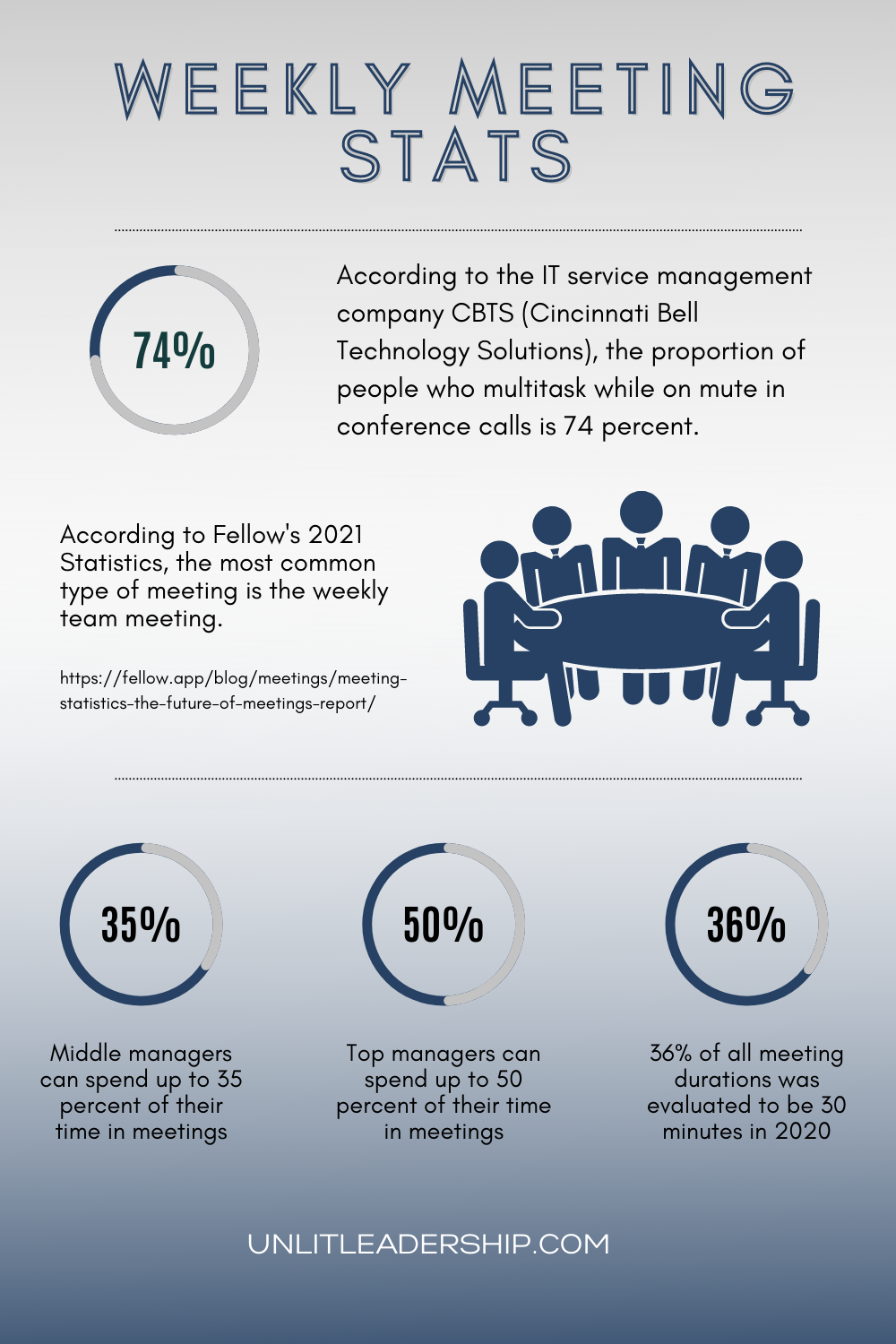Weekly team meetings are a necessary evil for most organizations, both small and large. When leaders run them correctly, they can benefit and foster consistent progress and actionable items within the organization. Unfortunately, too often, they began to fall by the waist side as time goes on. However, here are a few tips that can help you breathe life back into that dying meeting.
The way a leader handles the life cycle of the weekly team meeting is similar to how many of us handle our computer life cycle. When you first buy a new computer, everything runs smoothly, just as it should. The laptop starts up lightning-fast, your files are neat and orderly, and the programs perform at their optimal levels. Initially, you try to do all the little things to maintain this high level of efficiency. You regularly empty your digital trash, you keep your files and folders organized, and you keep all your programs and antivirus up to date.
Unfortunately, inconsistency, lack of time, and sometimes general laziness always wins out, and months later, you have 12 different versions of the same file saved across multiple places on your computer. You begin ignoring the update popups, your programs are lagging, and now it takes 20 minutes for the computer to load, and bit by bit, your computer slows down. Unfortunately, our weekly team meetings follow a similar path.

How the weekly meeting initially starts off
Leaders usually develop weekly meetings with the best intentions in mind. Most often, to foster an environment of collaboration, transparency, and shared focus. After working through the initial format of the weekly huddle, the first couple of meetings run smoothly. You properly prepare, check your notes the day before, send a concise yet comprehensive agenda, schedule the location, and ensure that the appropriate resources are available. The team appreciates your efforts and provides valuable insight and input as team members share essential information and collaborate to address weekly challenges.
What happens to the weekly meeting over time
Unfortunately, similar to that slowing computer, the weekly meeting begins to wane. It starts with the last-minute cancellation because something else took priority. Then you have to cancel two weeks in a row because of new competing priorities. Next, you hold the meeting just because you haven’t had one in a few weeks, and you don’t want to lose traction. Before long, your team members are dreading the weekly team meeting because you are not providing anything of value that you couldn’t have shared via email.
So how do we breathe life back into the weekly meetings that are slowly but surely dying? Here are three steps to revive your weekly meetings.
Step 1: Ask yourself and your team, are the weekly meetings still valid?
This idea may be a harsh reality for those who love routines, but maybe there is no longer a need for the weekly meeting. Try not to view this as a negative, perhaps you started the weekly huddle to increase collaboration or transparency within the organization, and you met that objective. The team is at the height of productivity and is in constant communication, so you no longer need to continue the meeting.
Another possibility is that you need to adjust the frequency of the meetings. Maybe you don’t have enough information to cover in a weekly meeting, and switching to a bi-weekly or monthly frequency would be more beneficial to the team.
Check and see if the focus or objectives of the meeting require adjusting. You may have started to share information from the leadership down, and now the meeting needs to shift to more of a collaborative forum. Or the organization has shifted priorities which have resulted in the change of direction for the team.
Finally, can your objectives be met by attending another scheduled meeting? There are only so many hours in the day, and only a portion of those can be spent in meetings while still maintaining a high level of productivity. Other meetings may meet the same objective. Another option is to consolidate a couple of different meetings into one to maximize time and input.
According to the Wall Street Journal, time spent in meetings has risen by 8% to 10% annually since 2000. Senior executives are spending an average of 28 hours in meetings each week, and middle managers spend 21 hours.
Step 2: Enlist the help of the team for your weekly team meetings
We understand that this is your meeting, but you are also the reason the meeting has been steadily spiraling downward. As leaders, self-awareness, transparency, and the ability to harness the power of teams are essential traits. Therefore, use your gifts to breathe life back into the weekly team meetings by acknowledging that you may be the cause or reason for the downward spiral.
The weekly huddle is your meeting, so be upfront with your team and admit that the team meeting has gone astray.
Use this transparency to enlist ideas and suggestions to improve the weekly team meeting. By allowing team members to be part of the solution, we are empowering our team. Also, you can now share the responsibility for making the meeting worthwhile and value-added. For example, you may struggle with consistency when sending out the notes after the meeting or update the calendar when the venue changes. Assign these tasks to one of the team members; that way, you all play a part in the success of the weekly team meeting.
“As a leader, you must consistently drive effective communication. Meetings must be deliberate and intentional – your organizational rhythm should value purpose over habit and effectiveness over efficiency.”
– Chris Fussell
Step 3: Assess and reassess your weekly team meetings
When did you first notice that the weekly team meetings were on their last leg? Can you pinpoint the moment when the downward spiral began? If you can’t answer these questions, ask yourself whether you took the time to assess your meeting performance and outcomes. The military is excellent at conducting After Action Reviews (AARs). When I first joined the Army over 21 years ago, we could not close out any training session, class, or meeting without an after-action review.
As a junior soldier, I loathed having to provide input on what areas should be improved and/or sustained along with recommendations for every meeting or training session. However, as I gained more experience and began to lead my meetings, I quickly gained an appreciation for the importance of assessing and critiquing my meetings. By asking the attendees to provide feedback, you can gauge the effectiveness of your objectives. Also, you will know when you are veering away from your goals and immediately course correct. Finally, the AARs are an easy way to have the attendees as part of the solution.
“To increase the effectiveness of a meeting, attendees should periodically critique it for what can be improved — if not for the remainder of the current meeting, then for the next one. Among other things, they should examine the pace and flow and revisit the ground rules and their effectiveness.”
– The Psychologist September 2011
Conclusion
The weekly meeting doesn’t have to be a dreaded event. Leaders should ensure that their weekly team meetings are value-added to those who will be participating and provide value to the organization. The best way to this is to have a clear vision of what you want to see come out of the meeting. Once you have the vision, reach out to your team and the organization’s leadership for input and buy-in as you shape the agenda. Finally, continually assess the meeting to ensure that you and your team address action items, identify roadblocks, and address team and organizational concerns.



